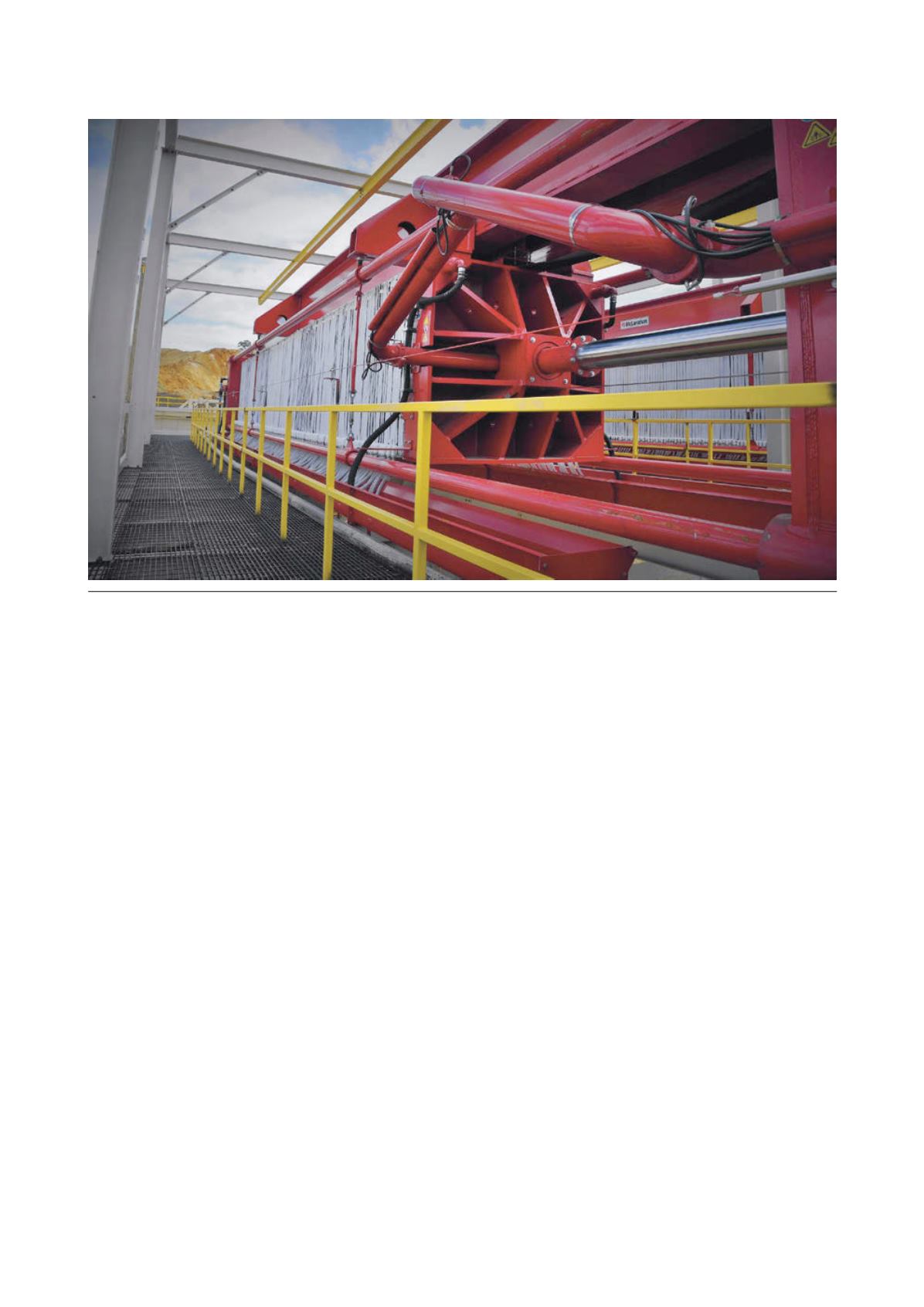
of the muds. Methods for continuous
settling tests have been developed in
the past 15 yr and have been shown to
give a much better set of data for
sizing and selection of the thickeners
than static tests.
Progressing on in the thickening
continuum, what happens after paste
thickeners? After is an area where
forces other than gravity alone must be
introduced to create higher solids
concentrations. This is the realm of
filters and centrifuges. Most recently,
the coal industry has discovered
recessed plate filter presses, an old
technology used by the wine and olive
oil industries, but redesigned for
successful use by mining operations.
Of particular interest with this
technology is the ability to prepare
tailings without additional chemicals
that allows ‘dry stacking’ and total
elimination of impoundments to
restrict flow of muds and water.
Recessed plate presses
At its most basic level, the filtration
cycle of a filter press consists of
covering two plates with filter media,
applying enough force to create a seal
between the two filter plates, and then
using a feed pump to supply the
pressure necessary to pump the slurry
into the cavities formed between the
two sealed plates. The filter cloth
prevents solids from escaping from the
plates, while allowing the filtrate to
pass through the openings in the filter
media. Once the chamber is packed
full of solids, the feed pump stops, the
pressure sealing the plates is released,
and the filter plates are pulled apart
from each other, allowing the
dewatered cakes to discharge via
gravity.
It is a common misconception that
filter presses squeeze plates in order
to dewater the cakes. In actuality,
there is no movement of the press
during the dewatering of the filter
cakes. Plates connect together to form
a seal and the feed pump supplies the
necessary pressure to dewater the fine
solids. The only movements of the
press during operation are typically
for opening the press to discharge the
cakes and closing the press to start
another cycle.
The simplicity and limited
movement of filter presses is what
lends them to high levels of
automation and reliability. The ability
to select cycle times, cake thickness,
feed pressures and plate styles is what
allows filter presses to achieve much
drier cakes than many competing
technologies.
Filter press operation is a batch
process and, when considering what
the capacity of a press is, it is to be
remembered that the capacity is
strictly a function of the cycle time.
Each press comes with a finite volume
to form cakes. Shorter cycle times (the
time it takes to go from start to start)
are promoted by:
n
n
Optimising cake thickness:
thinner cakes form quicker than
thicker ones.
n
n
Higher permeability of solids:
the easier it is for water to pass
through the cake, the quicker the
filtration stage.
n
n
Optimum cake moistures: if 18%
moisture is achievable in 40 min.,
is 20% after perhaps 30 min.
acceptable?
n
n
Higher feed solids concentrations:
the less water to push through
Figure 5. McLanahan recessed plate filter press with over-head beam design.
78
|
World Coal
|
June 2015


